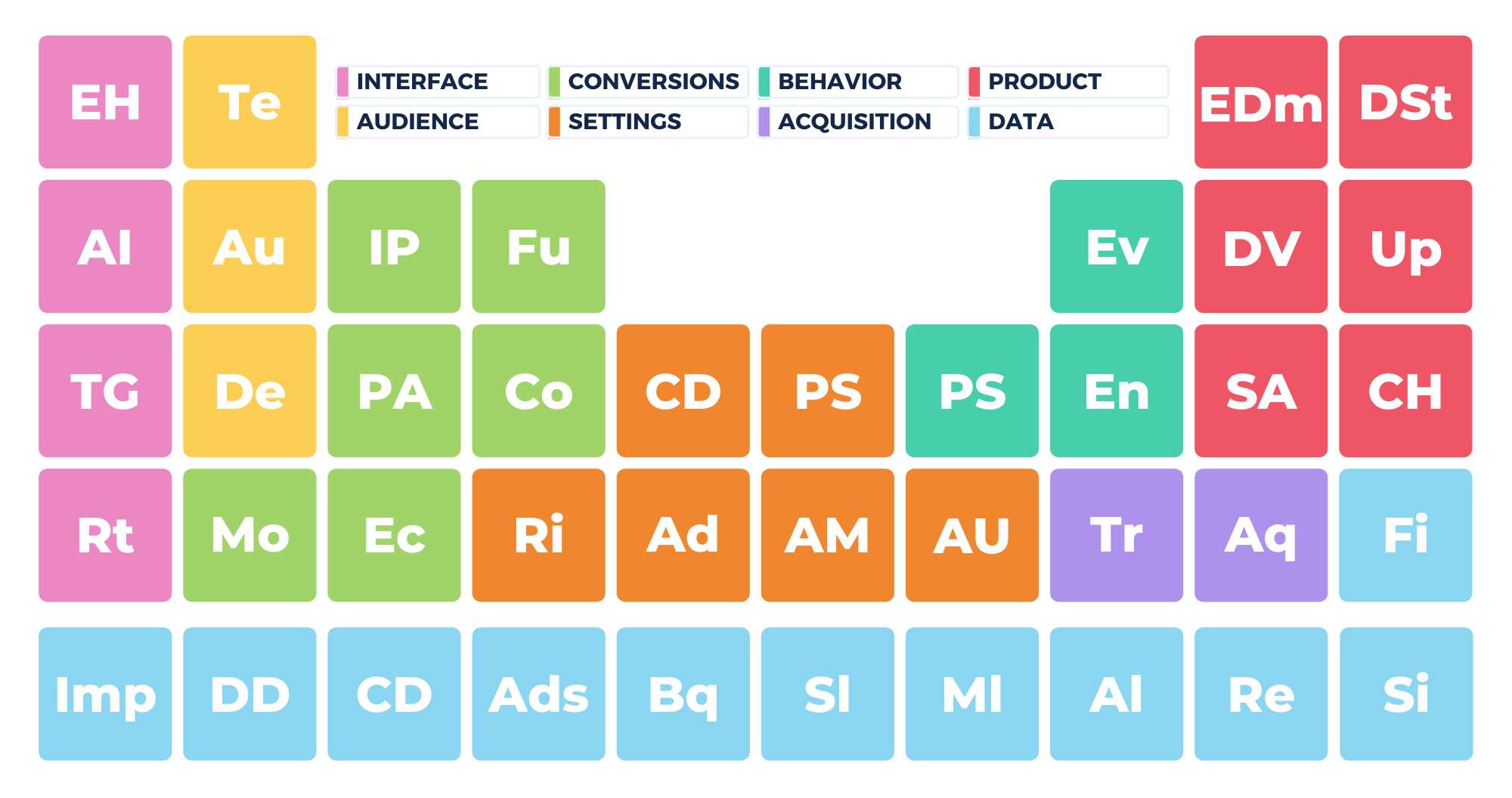
TRAFFIC ACQUISITION
Where you can learn about your website traffic sources

Understanding how your users came to be on your site is one of the most valuable pieces of information Google Analytics offers. In GA4, you can find this information in the traffic acquisition report.
So how do you use the traffic acquisition report in GA4? You can find this report easily in the left-hand menu and use it to view the entrance source for all users. You can also customize your traffic acquisition report by setting up comparisons.
Today, we’re going to discuss the Google Analytics 4 traffic acquisition report in detail and show you why it’s bound to be one of your favorite reports in this new version of Analytics.
What is The Traffic Acquisition Report?
In Google Analytics 4, the traffic acquisition report lets you see how users are arriving at your site by identifying their entrance source. The traffic acquisition report tells you where users came from, including organic search, paid campaigns, social media, etc.
You can use the information in your traffic acquisition report to make decisions about future marketing campaigns and determine the efficacy of your website and current marketing efforts.
How Do I Access The Traffic Acquisition Report?
Locating your traffic acquisition report in GA4 is very easy, and it’ll likely be one of your most frequently visited spots. To find it, follow these steps:
- Click “Acquisition” on the left.
- Click “Traffic acquisition.”

Once you’re inside the traffic acquisition report, you can customize it using comparisons and dive deeper into your data. We’ll cover this in the next section and talk about the top reasons to consult your traffic acquisition report.
How to Read and Customize the Traffic Acquisition Report
Okay, so let’s jump into how to read your traffic acquisition report. The first thing you’ll notice is that you’re automatically greeted by two graphs. The one on the left shows users by session source/medium over time, and the right shows users by session source/medium in a simple bar graph. You can hover over both graphs with your mouse to find more detailed information about a specific section.

When you scroll down, you’ll see a breakdown of all session source/medium in detail and there are some customizable elements as well. First, let’s talk about what source/medium means.

Source/medium tells you where your traffic is coming from. For example, you might see “Google/organic.” This means that the number of users arrived at your site via an organic search on Google.
There are a few values that show up under source/medium that can be confusing. First, you might see “direct/none.” This means that Analytics can’t find the referral information for these visitors and can’t trace them back to a particular entrance source.
You might also see a value of “not set” under source/medium. This is another form of direct traffic, but it’s not the same as “direct/none” traffic. Not set means the keyword data is unknown. Keyword dimension isn’t filled in for referral or direct traffic.
Both the direct/none and not set issues can be addressed in similar ways, using URL tags.
Additionally, take note that you can customize the information you see in this section of your traffic report. You can click the “+” sign to add another row, which lets you see more information about each source/medium category. For example, you can select “Browser” to see more information about which browser your users prefer. Note that the search function can be very helpful here if you’re looking for something specific.

You can also go back up to the top and add a comparison to customize your entire traffic acquisition report based on what you want to see. Simply click the “Add comparison” button at the top.
Say you’ve recently launched a marketing campaign aimed at gaining younger visitors. You can add a comparison to include age in your traffic acquisition report. In this case, you would click “Add comparison” and then select “Include,” “Age,” and your preferred range.

You can add additional conditions as well to customize even further. Just click “Apply” when you’re ready. Following our example, you’ll now see that your traffic acquisition report contains an age comparison as well.

Why is The Traffic Acquisition Report Important?
If you are responsible for monitoring and evaluating traffic data, you probably already know why understanding traffic acquisition is so important. But let’s discuss some reasons you want to pay close attention to this report in GA4.
- See Where Users Are Coming From: This report lets you see precisely where users are coming from. Did you launch a new campaign on Facebook? With the traffic acquisition report, you can see how well this is paying off. Are you monitoring an emerging traffic source to see if it’s worth your effort? The traffic report can help there too. In short, your traffic report is the best way to determine the real ROI of your marketing and traffic campaigns.
- Ensure Diversity: This report is also great for ensuring you have diversity among your entrance sources. If the bulk of your traffic is only coming from one area, you can focus your efforts elsewhere.
- Improve Your Content: By looking to see how many of your users are arriving via organic search, you can see if there are issues with the content on your landing pages. You might need to improve your use of keywords or produce longer, more informative content to gain more users this way.
- Identify Weak Areas: You can also use this report to identify where your marketing efforts are failing, like with social media or a paid ads. Use the comparison feature to see where you might want to launch a remarketing campaign.
- Evaluate Targeted Campaigns: This report is also essential for understanding how well your targeted marketing campaigns are performing. For example, as we showed in the previous section, if you launched a campaign targeting a particular age group, you can use the traffic acquisition report to see how well it’s bringing that targeted age group to your site.
How is GA4 Different?
The traffic acquisition report in GA4 has a lot of helpful features, but it won’t feel brand-new to you, even if you’ve been using Universal Analytics for years. This report is very similar to what you see in UA when you go to “Acquisition” > “All Traffic” > “Source/medium.”

The options you have between the two are somewhat different, but adding a segment in UA is similar to adding a comparison in GA4. But things have been simplified a bit in GA4, making this report a little more user-friendly overall.
Closing Thoughts
The traffic acquisition report in Google Analytics 4 has been simplified and made to be user-friendly. You can easily customize this report with comparisons and use it to identify the strengths and weaknesses of your marketing campaigns.
Monitoring your traffic will give you a head’s up on emerging trends and let you see where you’re missing the mark, so don’t forget to always check in on this report when going through your Analytics data.
How are you enjoying the new traffic report in GA4? Let us know!

